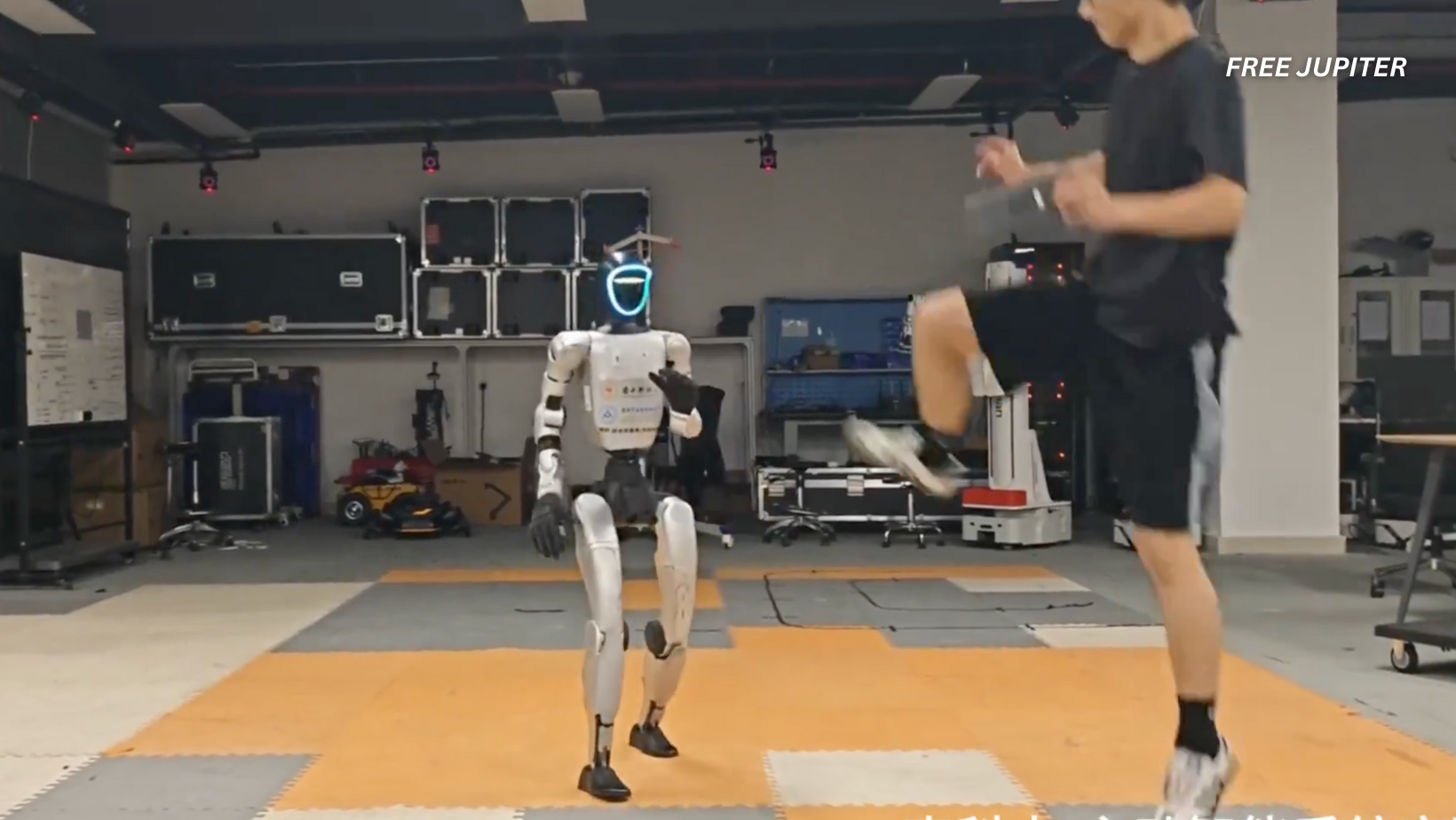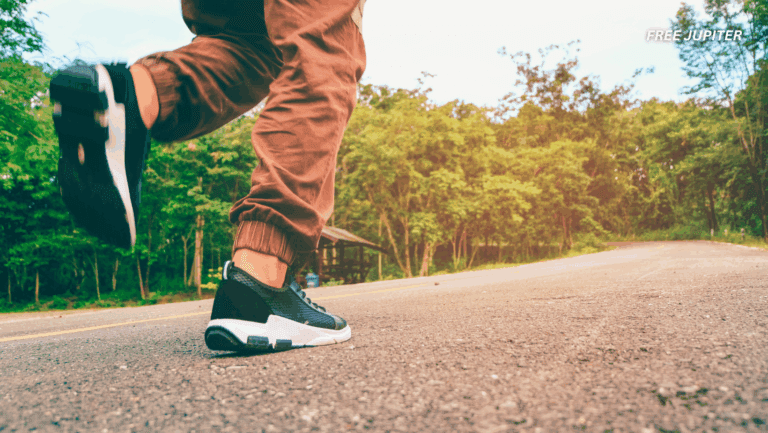If you’ve ever watched an action movie and thought, “Well, at least robots can’t do that yet,” you might want to sit down. A new video has gone viral showing a humanoid robot standing its ground against a flying dropkick from a human. Instead of crumbling to the floor, the machine barely budges—then steadies itself like it’s ready for round two.
Understandably, people on the internet are having a bit of a moment. One Reddit user quipped, “OK, should we start worrying?” Another chimed in with the observation, “It looks like it doesn’t like falling.” Jokes aside, the clip has raised both eyebrows and questions about how far robotics has come—and how quickly.
Meet the Robot: Unitree’s G1
The star of the video is the Unitree G1, a humanoid robot that’s becoming something of a celebrity in the robotics community. Manufactured by Unitree, a Chinese robotics company, the G1 is designed to test out reinforcement learning—essentially, a way for robots to “practice” until they get better at specific tasks, much like humans learning through trial and error.
Scientists at the Active Intelligent Systems (ACT) Lab at Southern University of Science and Technology (SUSTech) in Shenzhen were the ones behind this dropkick experiment. Their work shows off the G1’s agility and balance, qualities that set it apart from earlier humanoid models that tended to topple over if someone so much as nudged them.
And while a full-force human flying at your chest might sound like a sure way to knock anything over, this robot barely blinked—figuratively speaking.
Unstoppable Martial Arts Robot: Watch It Take a Dropkick!
What’s Really Impressive
The most surprising part isn’t that the robot resisted the dropkick. It’s what happened when it actually did lose balance. In one part of the video, a loose floor tile tripped it up. For a split second, it looked like the robot might go down—but instead, it sprang back to its feet in less than a second.
Think about it: most of us would need at least a couple of seconds (and maybe a wince of pain) to bounce up after slipping on uneven ground. The G1’s ability to recover so smoothly hints at just how advanced its programming has become.
Not Its First Fight
This isn’t the first time we’ve seen the G1 flex its martial arts chops. At the World AI Conference in Shanghai, two G1 robots faced off in a kickboxing showcase, complete with punches, kicks, and dramatic spins. The moves were choreographed, sure, but the fact that robots can perform them at all is a massive leap compared to clunky prototypes from just a decade ago.
Before long, we might see robots taking part in demonstration “fights” as regularly as we see drones in light shows.
When Things Don’t Go According to Plan
Of course, not every test ends in glory. Back in July, a different company, REK, ran a trial with the G1 that went a little sideways—literally. In a video, the robot flailed wildly in a harness, swinging its arms and legs as though it was trying to wriggle out of a straightjacket. The sight was equal parts comical and unsettling.
Moments like these serve as a reminder: these machines aren’t perfect, and their training involves plenty of awkward trial runs before the slick demos make headlines.
Robots With Different Personalities
Not every G1 is destined for martial arts fame. Some have taken a lighter path—like “Jake the Rizzbot,” a cowboy hat–wearing humanoid spotted wandering American city streets this summer. Instead of delivering high kicks, Jake greets pedestrians with compliments, cracks jokes, and generally plays the part of a robotic street performer.
This contrast is telling: the same base machine can be trained for combat-style demonstrations or social interaction, depending on the goals of the programmer. It’s less about what the hardware can do, and more about what skills developers choose to teach it.
Why Dropkicks Matter
You might be wondering: Why on earth are scientists teaching robots to take a dropkick? Fair question. The answer lies in balance and durability testing. If a robot is going to work alongside humans—whether in warehouses, search-and-rescue missions, or even healthcare—it needs to handle unexpected impacts without collapsing.
Imagine a rescue robot in a disaster zone. Falling debris, sudden pushes, or uneven ground are all real risks. A robot that can steady itself after a shove is far more useful than one that tips over and needs to be manually reset.
The martial arts theatrics make for good viral videos, but the science behind them is about resilience, not combat training.
Related Stories: Robots in Action
The G1’s antics fit into a bigger picture of robots steadily creeping into everyday spaces:
- Boston Dynamics’ Atlas Robot – Once famous for its wobbly walks, Atlas now performs parkour routines, flipping and vaulting over obstacles. While recently retired, its demos proved humanoid robots can move with surprising grace.
- Agility Robotics’ Digit – Designed for warehouse work, Digit can walk, bend, and carry packages. Amazon has already been testing it in facilities, hinting at a future where humanoid robots become common coworkers.
- Social Robots Like Pepper and Ameca – These aren’t built for martial arts, but for conversation and companionship. Some can recognize faces, hold conversations, and even display a wide range of humanlike facial expressions.
Together, these examples show the variety of roles robots are being trained for—fighters, helpers, entertainers, and everything in between.
The Balancing Act: Progress vs. Caution
For all the fun, there’s also a nervous undercurrent in how people react to these robots. Videos of machines kicking, flipping, or resisting human pushes often inspire comments about “robot uprisings” or comparisons to science fiction movies like The Terminator.
Experts, however, tend to stress the practical side. Teaching robots balance and resilience isn’t about creating fighters—it’s about building tools that can function in unpredictable real-world environments. At the same time, ethical questions are simmering in the background: who controls these robots, what tasks should they be trusted with, and where do we draw the line between helpful and intimidating?
Final Thoughts
The viral dropkick test is more than just a stunt—it’s a glimpse into a future where robots are tough enough to handle real-world chaos. Whether they’re helping in warehouses, wandering city streets in cowboy hats, or showing off martial arts at conferences, robots like the Unitree G1 are proving that we’ve come a long way from the stiff, stumbling machines of the past.
So, should we worry? Probably not—at least not yet. For now, the biggest danger a G1 poses is making you do a double-take on the internet.
Featured image: Screenshot/X.
Friendly Note: FreeJupiter.com shares general information for curious minds. Please fact-check all claims and double-check health info with a qualified professional. 🌱










